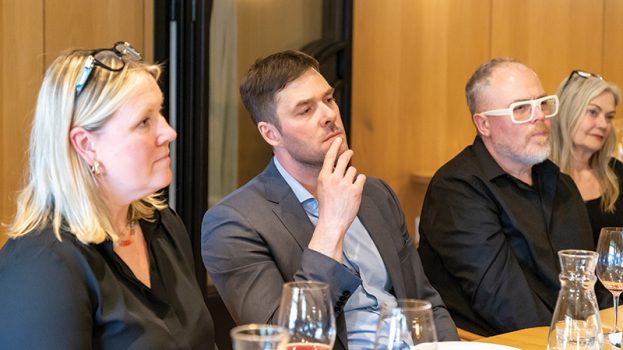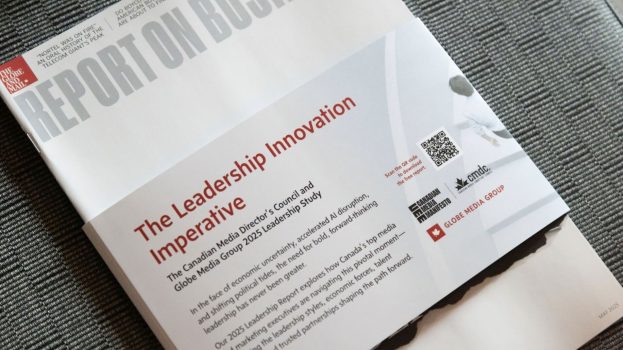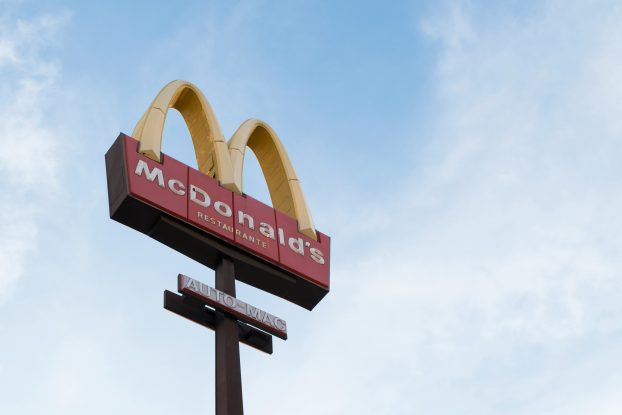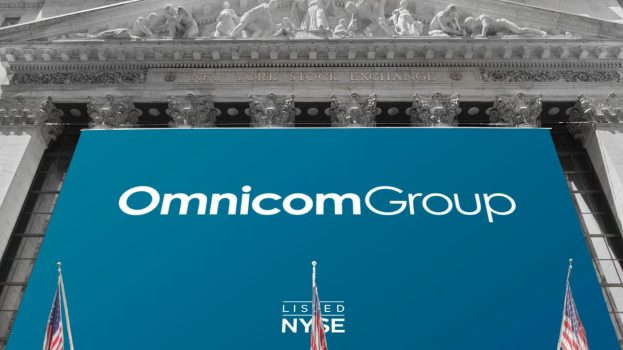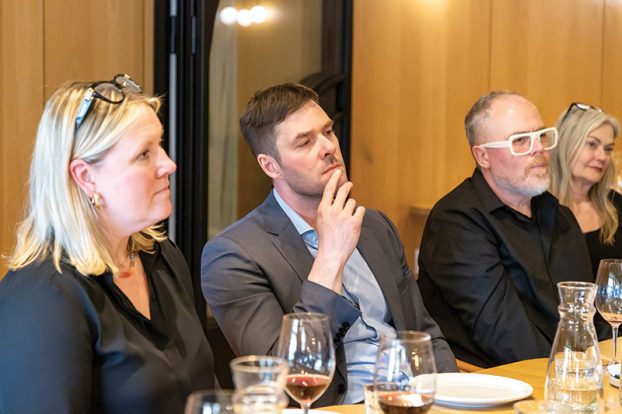 This story appears in the July/August 2015 issue of strategy.
This story appears in the July/August 2015 issue of strategy.
There’s a new breed of social influencers on the horizon. They’re chatty, require very little equipment to share their thoughts with the public, and they’re eager to feed society’s craving for instant consumption. Could Periscope broadcasters, who live-stream the world to the world, be the next online superstars? And how can brands get in front of them?
It’s been the best of times and the worst of times for Periscope. The three-month-old live-streaming app is barely a toddler (in tech years), and it’s already been given a spanking. The industry’s still shaking its finger at the Twitter-owned app for bringing piracy concerns to the fore when boxing champions Mayweather and Pacquiao went head-to-head and Periscope users went television-to-phone (essentially live-streaming the pay-per-view match via the app for thousands to watch gratis).
Indeed, we’re entering a “new age of piracy,” news reports stated at the time, adding fuel to networks’ concerns of apps like Periscope and competitor Meerkat stealing eyeballs by live-streaming their content. But amidst the negative press, many missed the birth of what Mitch Joel is calling “the new broadcaster.” The president of Montreal-based digital shop Mirum writes in his agency blog Six Pixels of Separation that “a new kind of media celebrity is brewing.”
This new celeb on the scene will eventually be likened to the vloggers and Viners who have captured the undying attention of the latest tech-hungry generation, predicts Joel. They take the world as they see it and add a layer of personal commentary, with the “fight of the century” being one of the first big instances of this live curation of existing content, he adds.
“While the media was focused on the piracy issues, there was a little nuanced component [that was missed]. Some people, who are real boxing enthusiasts, were not only Periscoping the event, but doing their own colour commentary as the event was happening.” Some viewers even went as far as to say the streamers were better than the paid announcers, adds Joel. They reported a detailed play-by-play, while those tuning in watched, listened and left “hearts” (the app’s equivalent of “likes”) and comments via the chat feature.
The emergence of this new breed of broadcasters, some of whom are ordinary people with little experience creating social content, but already boast thousands of followers, is no coincidence. Joel attributes their arrival to three historical moments: the launch of TV series Mystery Science Theater 3000 in the ’80s and ’90s, which featured a man and his sidekick robots watching and commenting on B-movies while they played on a cinema screen; the day Howard Stern tweeted through a weekend TV broadcast of his film Private Parts, which helped lead to the now-popular live-tweeting trend; and when Amazon purchased Twitch, a gaming portal where people can watch others live-play and talk about videogames.
 These events helped spawn a new entertainment subculture, says Joel, where people exhibit their innate human curiosity for stories told from perspectives they haven’t seen before (one of the reasons drones and GoPro cameras are such crowd-pleasers).
These events helped spawn a new entertainment subculture, says Joel, where people exhibit their innate human curiosity for stories told from perspectives they haven’t seen before (one of the reasons drones and GoPro cameras are such crowd-pleasers).
So what does this mean for brands? And how can they tap these so-called “new broadcasters?” Brand events could be amplified through behind-the-scenes commentary, making marketing stunts more scalable by reaching a broader audience in real time, notes Joel. “The ability for individuals to create new forms of content – and act like hosts on top of an event – is becoming much easier since live-streaming tools like Meerkat and Periscope took hold.”
What’s more, their audiences are also active participants and can help to steer conversations with broadcasters. For example, veteran magician Jon Jacques invites his group of voluble Periscope fans (of which there can be up to 400 at any given time) to direct him during live impromptu broadcasts on the streets of New York. To prove that his magic tricks are unstaged, and add a level of intimacy to the experience, Jacques asks viewers to pick any person on the street for him to perform for.
“You look at any form of marketing, and you can really tell a story,” says Joel. “Imagine you’re Doritos and you’re about to shoot your next spot for the Super Bowl. Now imagine being able to live-stream the process, giving it special exclusivity.” That piece of content, which would have otherwise been uploaded to YouTube days later, now has the advantage of receiving direct fan feedback, allowing the brand to act on it.
“Think about all the money that’s put into experiential marketing. Now think about all the people who can’t be there. This is a tool that completely implodes most of the issues.”
Periscope (best) practices
So you have another tool in the kit, and you’re wondering how to use it. Some early adopters of Periscope have found ways to get in front of audiences (beyond tapping influential broadcasters), so here’s a cheat sheet with a few of the best uses to get your head churning with ideas.
Host a live show
Just before bedtime, one April evening, U.S. publisher Hearst unleashed 18 live broadcasts, one for each of its magazine and digital brands. The simultaneous blasts of video were accompanied by the hashtag #BedtimeStory and featured editors and personalities providing pre-sleep entertainment. For instance, Cosmopolitan‘s “resident shirtless hunk” CJ Richards was shown reading children’s book Goodnight Moon (while cuddling a kitten, natch). On another channel, for Elle.com, editor Leah Chernikoff was featured interviewing model Elly Mayday about her evening beauty routine.
 Get in front of a crowd, wherever
Get in front of a crowd, wherever
Who says tennis rivalries should only be squashed on the court? Luxury watchmaker Tag Heuer hosted a full-on tennis match outside one of its stores on the Champs-Élysées in Paris last May, and turned to Periscope to document it and reach audiences from continent to continent. The two opponents, Maria Sharapova and Kei Nishikori, went against each other in the brand’s “Don’t crack under pressure” match, which attracted crowds on the street and online with people checking in from all parts of the world.
Present a Q&A session
Usually with film premieres, a Q&A session happens post-screening, but when director Craig Goodwill debuted his movie Patch Town in New York in early June, he got chatty with the audience smack-bang in the middle of the show. With the help of Toronto’s Rethink, Goodwill live-streamed the screening inside a Greenwich Village cinema via Periscope and invited people to chime in with questions related to the making of the film, which is about a grown-up Cabbage Patch Kid who was forgotten and betrayed by his adoptive mother.
Make live branded content more live
If you’ve ever heard of the Volvo Ocean Race, you’ll know it’s one of the most extreme round-the-world sailing races, with teams racing across four oceans in a Volvo Ocean boat. It’s the longest offshore race, lasting nine months, and the teams are documented each step of the way, with video segments regularly uploaded online. But this year, the brand is using Periscope to make the experience (which ends mid-June) even more real-time, having teammates show a live perspective of life on the boat, and even inviting people to interact with the sailors.
First two images courtesy of Twitter/Periscope

